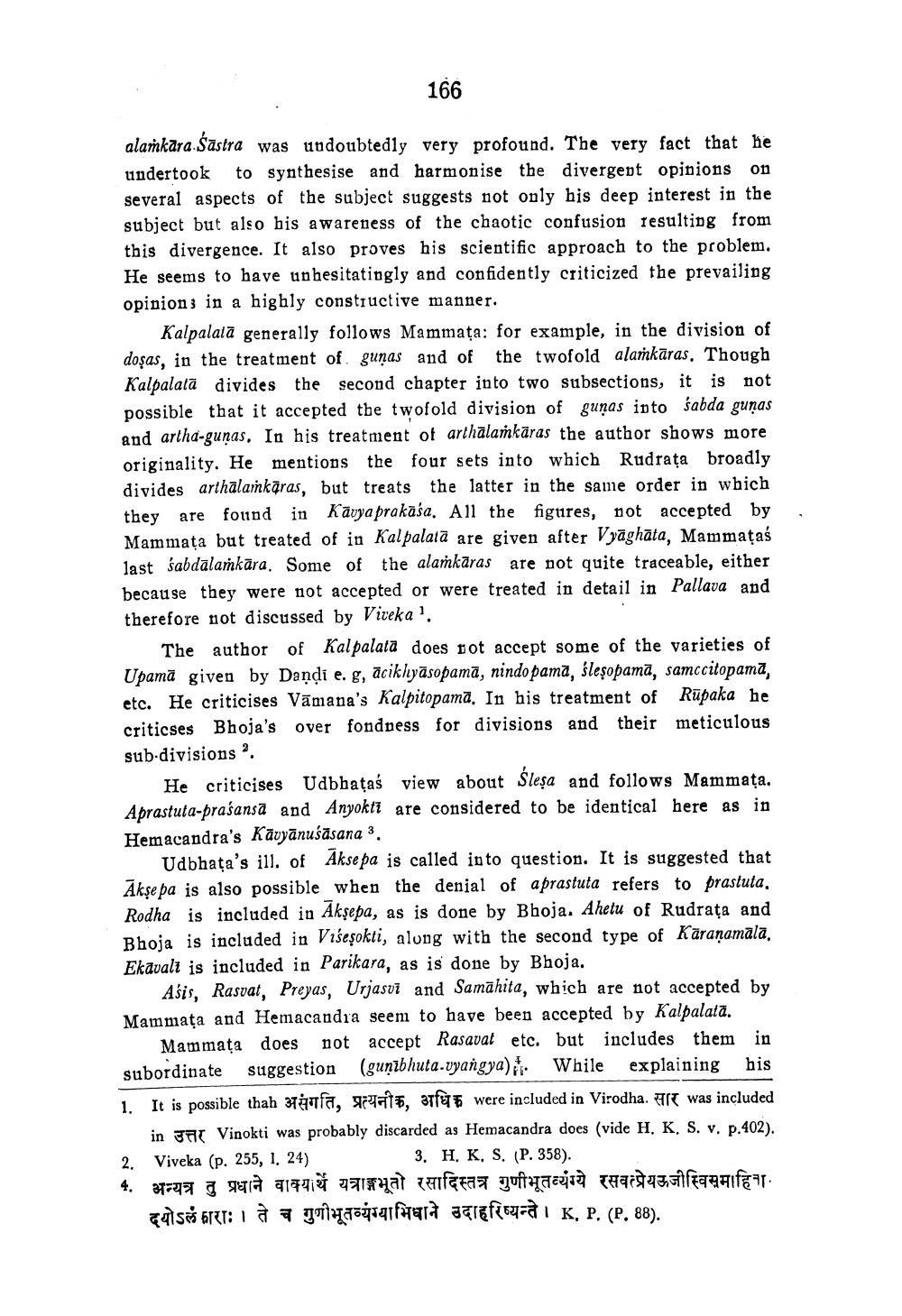________________ 166 alamkara Sastra was undoubtedly very profound. The very fact that he undertook to synthesise and harmonise the divergent opinions on several aspects of the subject suggests not only his deep interest in the subject but also his awareness of the chaotic confusion resulting from this divergence. It also proves his scientific approach to the problem. He seems to have unhesitatingly and confidently criticized the prevailing opinions in a highly constructive manner. Kalpalala generally follows Mammata: for example, in the division of dosas, in the treatment of gunas and of the twofold alamkaras. Though Kalpalata divides the second chapter into two subsections, it is not possible that it accepted the twofold division of gunas into sabda gunas and artha-gunas, In his treatment of arthalankaras the author shows more originality. He mentions the four sets into which Rudrata broadly divides arthalankaras, but treats the latter in the same order in which they are found in Kavya prakasa. All the figures, not accepted by Mammata but treated of in Kalpalata are given after Vyaghata, Mammatas last sabdalamkara. Some of the alamkaras are not quite traceable, either because they were not accepted or were treated in detail in Pallava and therefore not discussed by Viveka. The author of Kalpalata does not accept some of the varieties of Upama given by Dandi e. g, acikhyasopama, nindo pama, slesopama, samocitopama, etc. He criticises Vamana's Kalpitopama. In his treatment of Rupaka he criticses Bhoja's over fondness for divisions and their meticulous sub-divisions. He criticises Udbhatas view about Slesa and follows Mammata. Aprastuta-prasansa and Anyokti are considered to be identical here as in Hemacandra's Kavyanusasana 3. Udbhata's ill. of Aksepa is called in to question. It is suggested that Aksepa is also possible when the denial of aprastuta refers to prastuta. Rodha is included in Aksepa, as is done by Bhoja. Ahetu of Rudrata and Bhoja is included in Visesokti, along with the second type of Karanamala. Ekavali is included in Parikara, as is done by Bhoja. Asis, Rasvat, Preyas, Urjasvi and Samahita, which are not accepted by Mammata and Hemacandra seem to have been accepted by Kalpalata. Mammata does not accept Rasavat etc. but includes them in subordinate suggestion (gunibhuta.vyangya). While explaining his 1. It is possible thah असंगति, प्रत्यनीक, अधिक were included in Virodha. सार was included in GAT Vinokti was probably discarded as Hemacandra does (vide H. K. S. v. p.402). 2. Viveka (p. 255, 1. 24) 3. H, K, S. (P. 358). 4. अन्यत्र तु प्रधाने वाक्यार्थे यत्राङ्गभूतो रसादिस्तत्र गुणीभूतव्यंग्ये रसवत्प्रेयऊजीस्विसमाहिता Pulsos Brer: 1 a 9 prilygojqifiera galefiorai K, P. (P. 88).




